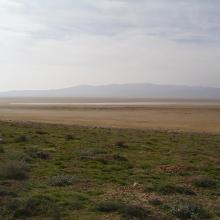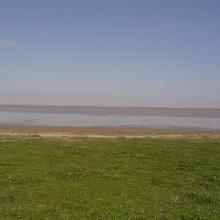


Chott El Beïdha-Hammam Essoukhna
- Country:Algeria
- Site number:1415
- Area:12,223 ha
- Designation date:12-12-2004
- Coordinates:35°55'N 05°49'E
Materials presented on this website, particularly maps and territorial information, are as-is and as-available based on available data and do not imply the expression of any opinion whatsoever on the part of the Secretariat of the Ramsar Convention concerning the legal status of any country, territory, city or area, or of its authorities, or concerning the delimitation of its frontiers or boundaries.
Overview
Chott El Beïdha-Hammam Essoukhna is a temporary brackish lake surrounded by a meadow composed of halophyte species; during the dry season, salt encrustations cover a large part of the Site. It is important for two wintering species, shelduck (Tadorna tadorna) and pink flamingo (Phoenicopterus roseus), which have been represented in relatively large numbers, though rarely exceeding the 1% threshold due to the nearby presence of several other wetlands. The lake plays a role in sediment retention and flood control during years of exceptional rains, and is an important grazing area for sheep that feed on the saltbush shrubs (Atriplex halimus and Atriplex canescens). It is also of archaeological interest thanks to the presence of shell middens, mounds up to 150 metres long and ten metres high which contain tools, bones, ash and snail shells dating back to the Caspian civilization of around 7,000 BCE. Around the Site are cereal and other cultivations, and some forestry activities further south. These agricultural practices, livestock farming, soil erosion and desertification are the main factors threatening the Site. There is not yet a management plan but some restoration actions are being implemented in order to protect the vegetation cover.
Administrative region:
Sétif et Batna
- Last publication date:10-05-2019
Downloads
Ramsar Information Sheet (RIS)
Archived RIS
Site map
Additional reports and documents
- Taxonomic lists of plant and animal species occurring in the site
- Other published literature
